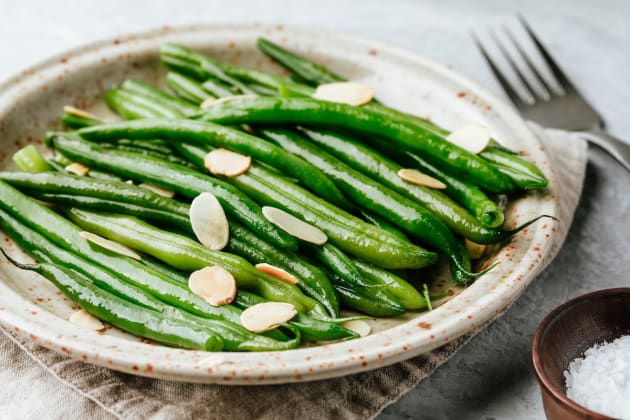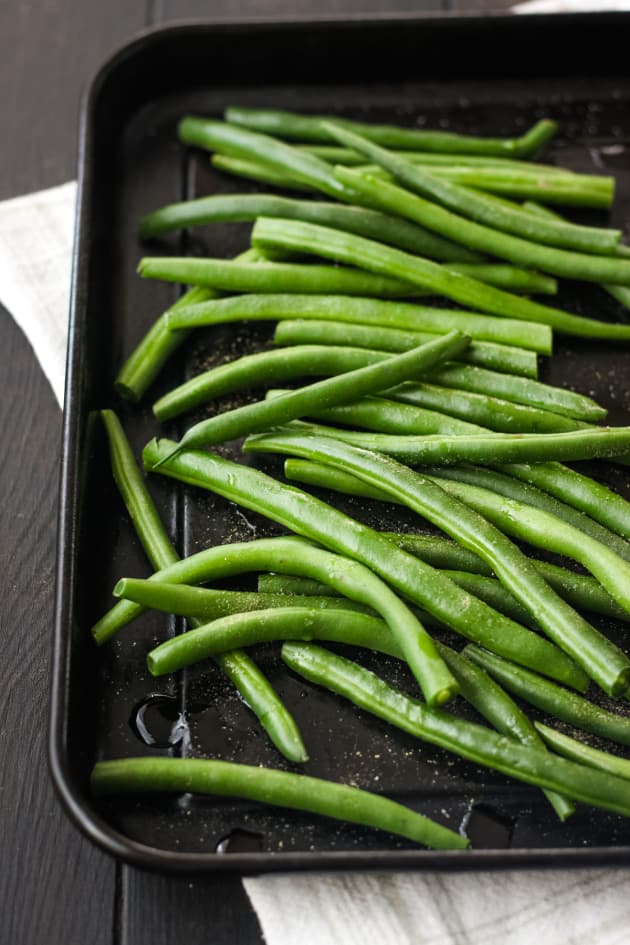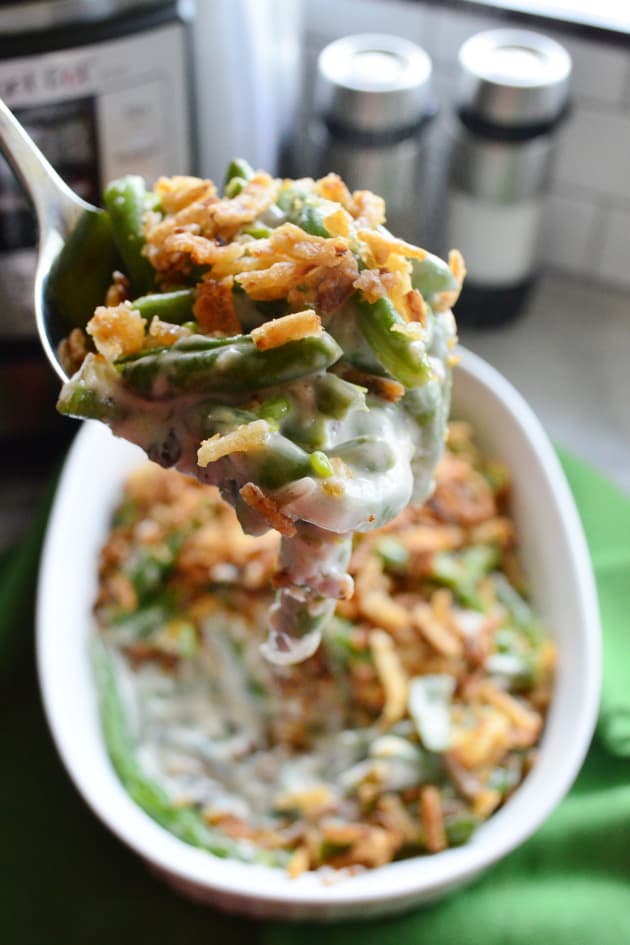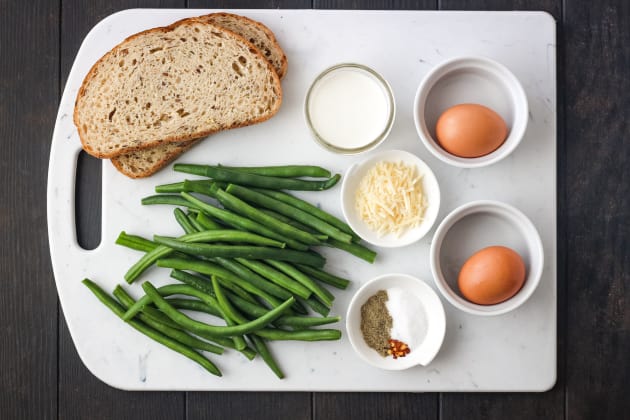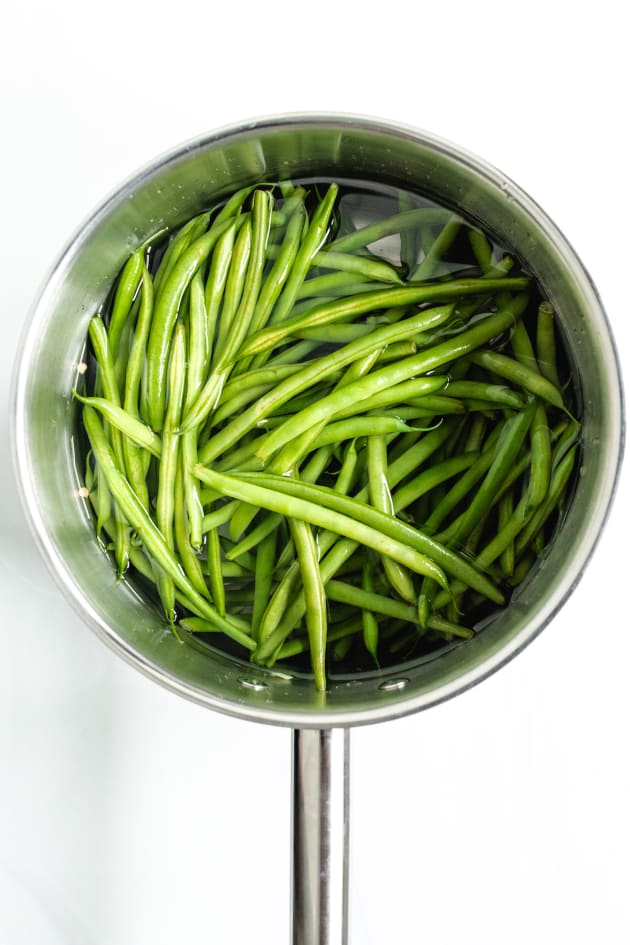How to Blanch Green Beans
Melissa BahenBlanching is an incredibly useful cooking technique. Learn how to blanch green beans and how to use them.
You may have come across a recipe that mentions blanching green beans...and now you're wondering just how to blanch green beans, right?
You've come to the right place! Here we're sharing all the ins and outs of blanched green beans, but don't worry! It's so easy.
Blanching is an incredibly useful cooking technique and one that you'll use all the time once you've master the simple art of blanching.
What Is Blanching?
Ok, so what is blanching? Blanching is a food prep technique that involves two steps:
- A very brief (usually just a couple of minutes) dip in boiling water;
- An ice bath to stop the cooking process rapidly.
In a nutshell, blanching halts the natural enzymatic process in fresh vegetables that causes them to lose color, flavor, and texture quality over time, keeping them fresher longer.
Knowing how to blanch vegetables, such as green beans and carrots, is such a handy kitchen skill and one we're sure you'll use over and over.
How Is Blanching Different From Parboiling?
Blanching is different from parboiling in a couple of significant ways. First, blanching is very brief, while parboiling usually takes longer.
Second, blanching is almost always a 2-step process: a quick dip in a pot full of water at a rolling boil followed by an ice water bath to quickly halt the cooking process.
If you already know how to parboil, you know that parboiling doesn’t involve an ice bath because you generally don’t want to cool food down after.
Which leads nicely into the third difference between blanching and parboiling - the goal of blanching is not really to partially cook food, which is the goal of parboiling.
After you parboil something, you finish cooking it using a different method. Parboiling it first just makes the second cooking method go faster.
If you want to roast potatoes as part of a sheet pan dinner, for example, it helps to parboil potatoes before adding them to the roasting pan.
This way, they cook in the same amount of time as everything else.
Why Blanch Green Beans?
Green beans are actually one of the first vegetables that pops into mind when thinking of blanching!
There are several reasons you might consider blanching green beans, string beans, wax beans or other green vegetables:
- If you want to freeze fresh green beans for future use, blanching them first is a simple method to help maintain their vibrant color, crisp texture, and fresh flavor while they’re frozen. After blanching, pat them dry with paper towels, tuck in freezer bags and freeze until you're ready to eat them.
- If you want to eat green beans cold but not raw, say in a salad, a quick blanching them gives them a beautiful color and nice crisp-tender texture. Raw green beans are a little starchy and, in our opinion, not pleasant to eat. Blanching them makes a huge difference!
- While it doesn’t apply to green beans, blanching is also among the best ways to quickly loosen the skins on tender produce like peaches and tomatoes so that they can easily be peeled off. Keep that little tip for the next time you need to make something that calls for peeled peaches, like this Slow Cooker Peach Cobbler that has my mouth watering.
How Long to Blanch Green Beans
Remember us saying that blanching green beans is super quick and easy? We weren't lying!
To properly blanch green beans, they only need to be boiled for 2 to 3 minutes when blanching. Yup! That's it.
You’ll know they are ready when they have a bright green color and tender crisp texture.
How to Use Blanched Green Beans
Blanching fresh green beans before freezing them is a must to preserve their quality in flavor, texture, and color.
That said blanching green beans before freezing them isn't the only way to use them.
Blanched green beans are a great addition to crudité platters, veggie trays, or charcuterie boards.
While completely raw green beans are definitely not a delight to eat, blanched green beans have tons of delicious green bean flavor, beautiful color, and a nice, snappy texture that’s perfect for eating cold.
Chilled salads are another great way to showcase blanched green beans. The first salad recipe that comes to mind is the french classic, Niçoise Salad.
This particular Niçoise Salad recipe calls for steamed green beans, but blanching them would work just as well and be even faster.
You can also try a cool, crunchy Green Bean Salad with a lemon-garlic-harissa dressing.
Blanched green beans also do well in recipes that traditionally call for canned green beans, like everybody’s favorite holiday side dish, Green Bean Casserole.
You could also add your blanched beans to this Mediterranean Pasta Salad for an extra bit of crunch and flavor.
If you’re looking to cut down on the sodium in canned vegetables, or if you just want to try your hand at making a recipe with fresh green beans instead.
Swap out the canned green beans for fresh, blanched green beans and you’ll be all set. It's the easiest way to add freshness and flavor to your favorite green bean recipes.
How to Blanch Green Beans
Blanching green beans is an easy and useful cooking technique. Here is our 8 step guide with everything you need to know about how to blanch fresh green beans:
- Wash and trim your green beans. Snap or cut off the stem ends.
- Put a large pot of water on the stove and bring it to a boil.
- Fill a large bowl with a mixture of ice and water, and place it on a work surface near the stove.
- Grab a slotted spoon, a small colander, a spider strainer, or some other kitchen utensil that you can use to scoop the green beans from the pot of boiling water.
- Blanching can be a little wet, so grab a small stack of kitchen towels on standby.
- Place your fresh green beans in the boiling water without splashing hot water all over yourself or the kitchen, and set a timer for 2 to 3 minutes.
- When the timer goes off, turn off the heat, scoop the green beans out of the boiling water, and put them directly into the bowl of ice water.
- Allow the green beans to sit in the ice water until they have cooled to room temperature, then drain them.
Planning a dinner party and need some inspiration?
How about looking for a new slow cooker dinner idea?
We’ve got you covered in our ever-growing Facebook group! If you’re not a member yet, why not?!

We’re chatting cooking techniques, dessert ideas, and everything in between. If you’re already a member, invite your friends to join us too!
Tip: Make sure you know how to tell if your green beans are bad.


